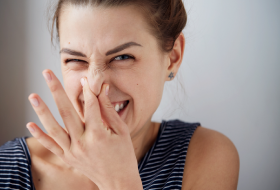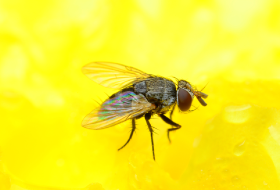How to make compost
Page updated on: 05/06/2023
It’s all about getting the mix right, compostable materials fall into two categories:
Greens
- Weeds, Fruit & Veg Peelings, Unused Fruit & Veg, Teabags, Coffee Grounds, Flowers, Plants, Hedge Clippings, Urine, Manure.
Browns
- Dead Leaves, Crumpled Cardboard & Paper, Egg Shells, Loo/Kitchen Roll Tubes, Cardboard Egg Boxes, Woody Prunings, Plant Stems & Twigs, Wood Chippings, Sawdust, Hay.
You need roughly a 50:50 balance of the above, too much moisture and the heap can stagnate and become smelly, too dry and it is slow to break down. Materials need to be wet but with plenty of air pockets, crumpled cardboard can help trap air in the heap.
Cooked food and meat waste should be kept out of the heap as they may attract rodents. For the same reason do not include any pet waste or natural bedding, unless your animal has a vegetarian diet.
Where should I put my bin
A sunny spot is best, though it will work in shade but may take a bit longer. Ideally the bin should be on soil to enable insects and bugs to get access. Putting it on gravel will also work but if you have a plastic membrane underneath, you may want to remove a section under the bin so that the bugs can get in.
Remember you will be filling the bin with waste from the kitchen as well as the garden so ensure the bin is placed somewhere easily accessible. It can work on concrete, as long as you add in some soil or some compost donated from someone else’s bin, to get the mixture going. Worms will also find their way in especially if you have a layer of moist scrunched up cardboard. If you are putting it on a concrete surface, beware as liquid will seep from the bin and can stain the area it sits on.
Recycling, Bins and Litter
Recycling / bin collections
- Black bags
- Report a missed bin collection
- A-Z of recycling
- Waste/recycling collection disruptions
- Email/text message collection reminders
- Glass collection service
Blue bags - Recycling
Food waste
Garden waste
Recycling Centres
Electrical / Electronic waste
Real nappies
Litter
- Report a litter problem
- Dog fouling
- Fly tipping
- Fly posting
- Graffiti
- Beach litter
- Fines for littering
- Pride in your Patch
- Dog Fouling Resource Pack
- 2 minute clean up - board locations
Hygiene and nappy waste
Future changes to recycling and bin collections
Eto
Event waste and recycling guide
- Pre event planning - design out the waste first where possible.
- Look for commercial/business waste services in your area
- Marketing and promotion of the event
- Containers and signage
- The post event clean up
Tîm Tacluso
More from Recycling, Bins and Litter




